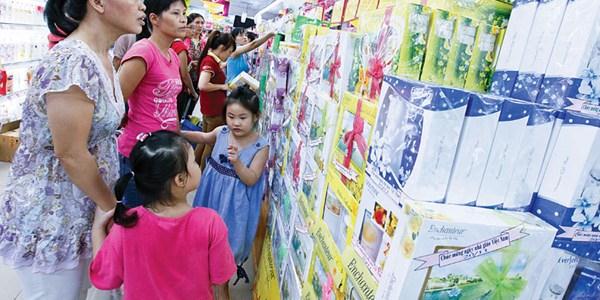Vietnam gives in to foreign retailers without a struggle
Vietnam gives in to foreign retailers without a struggle
The barriers Vietnam has erected cannot prevent the invasion of foreign retailers. The domestic retail market has been flooded with foreign brands.

One sales director of a Vietnamese company returned to his office empty-handed: he could not reach any agreement with a foreign retailer on the distribution of his company’s products within the retail chain.
“They (the supermarket chain) have set up so many requirements which, if we satisfy them, will push us against the wall,” he explained.
“The domestic retail market has been swallowed by foreign groups. Even Vietnamese retailers sell the products provided by foreign manufacturers,” he commented.
“The Ministry of Industry and Trade stated that Vietnam has the right to use an ENT (economic needs test) as an instrument to control the development of foreign retail networks. But as far as I see, it has been very easy for foreign retailers to set up supermarkets in Vietnam,” he maintained.
The Vietnamese retail market map
The Vietnamese Co-op Mart is still considered the retailer with the largest market share in Vietnam. The second position belongs to Big C, while the third to Metro, followed by Lotte Mart, Maximark, Citimart and Vinatex Mart.
However, analysts point out that the updated indexes have shown big changes of the market.
They cited a statistical source, informal but reliable, because the figures were calculated after considering businesses’ sales, as saying that Vietnamese retailers held 70 percent of the market share in 2005. This meant that foreign retailers only had 30 percent of the market share in Vietnam at that time.
However, the situation has become quite different, with the ratios flipping. Now the modest market share of 30 percent is held by Vietnamese, while the bigger slice of the cake is in the hands of foreigners.
“The Vietnamese retail market will be decided by convenience stores. Meanwhile, there is still no Vietnamese powerful convenience store system,” the aforementioned sales director said.
Vietnamese products removed from supermarkets’ shelves
Also according to the director, at all the supermarkets, foreign invested or Vietnamese, the products displayed on the shelves increasingly bear foreign brands, not Vietnamese.
“If you go to Big C or Co-op Mart and visit the cosmetics stalls, the goods that everyone has to use, you will only see foreign branded products, from shampoo to bath gel, skin care products to lipsticks,” he said.
“On the 8-meter long shelves at Big C, you will see numerous products bearing P&G and Unilever brands. Meanwhile, Vietnamese products nestle at the corners,” he commented.
The absence of Vietnamese products is also occurring at traditional markets. Vinamilk has been found as the only Vietnamese brand which has large coverage at the 500,000 surveyed sale points.
This has been explained by the fact that the Vietnamese leading dairy producer has powerful financial capability and has been preparing its network distribution development for a long time.
A recent survey by BSA, a center which specializes in giving consultancy to Vietnamese businesses, also showed that foreign branded goods have flooded traditional markets.
BSA said that merchants at traditional markets have been living on the products made of multi-national groups, the sale of which brings 80 percent of their income.
vietnamnet




















